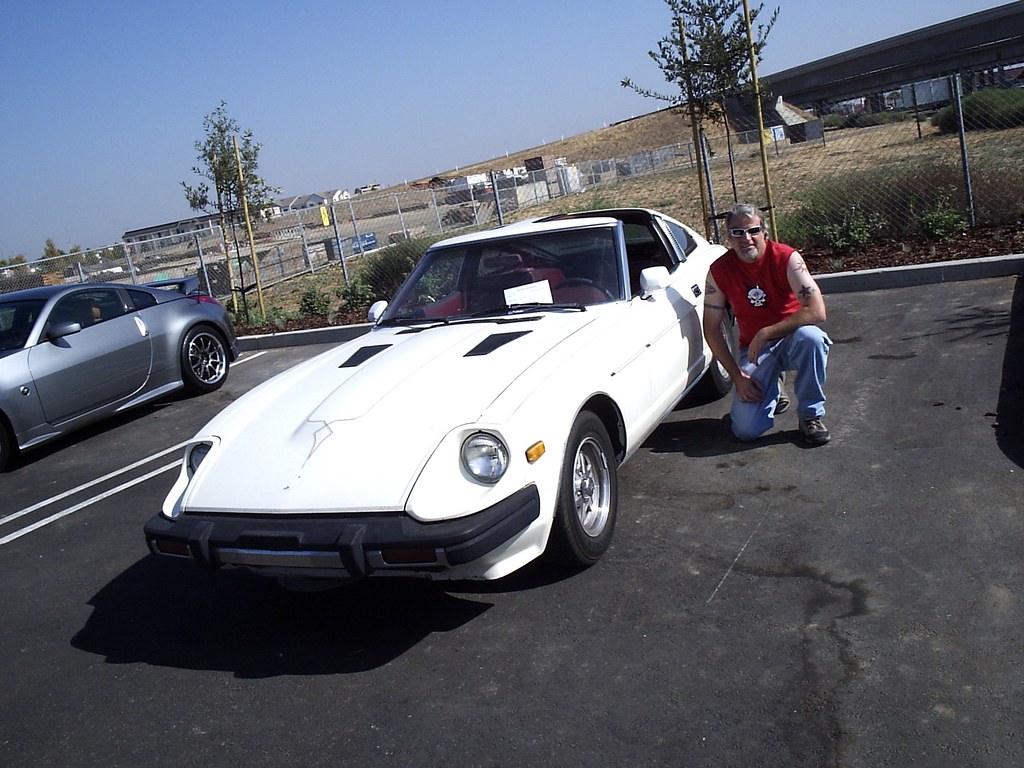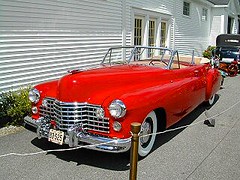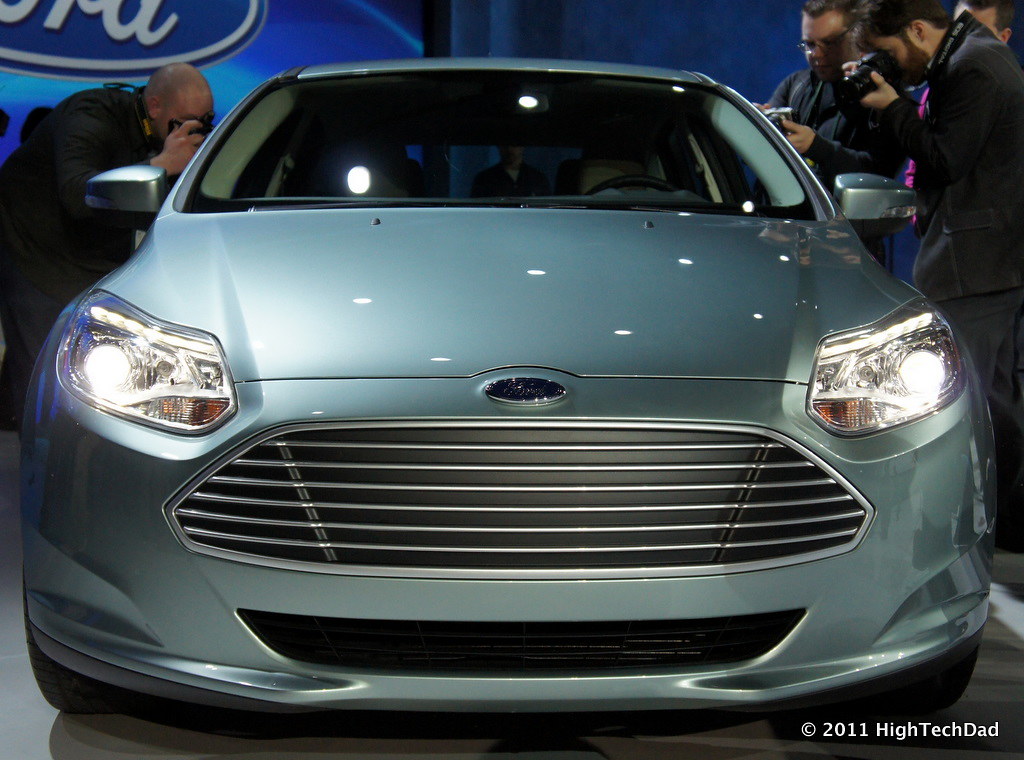
The automotive landscape is a dynamic tapestry, continuously rewoven with threads of innovation, shifting consumer needs, and evolving technological prowess. What was once considered cutting-edge or even a luxury becomes commonplace, then outdated, and eventually, a forgotten relic. If it’s been a while since you’ve shopped for a new car, the sheer array of modern features, from rearview cameras and safety sensors to expansive glass screens for navigation, can feel truly dizzying, illustrating just how far car design has come.
Indeed, car design, as Darren Palmer, Ford’s global product development director for battery electric vehicles, rightly observes, “evolves with the needs of the customer.” In our current era, the smartphone has seamlessly integrated itself into our lives, serving as our key, audio player, map, and even a direct line to roadside assistance. This technological convergence inside and outside the vehicle has effectively freed up space within the car’s interior, presenting automakers with unprecedented opportunities to design with entirely new rules and reimagine the driving experience from the ground up.
As the relentless march of progress dictates that the old must inevitably make way for the new, certain car features that were once considered indispensable or even highly desirable have quietly faded into obsolescence. Many of these additions, whether born from awkward safety experiments or simply becoming pointless gadgets that never quite worked as intended, have largely disappeared without drawing so much as a tear from modern drivers. We embark on a journey down memory lane to revisit 14 such features, exploring their past appeal and understanding why, in today’s context, no one seems to want them anymore.

1. **Cassette Players and CD Changers**Not so long ago, the quintessential road trip ritual involved meticulously curating a collection of favorite mixtapes or selecting the six best CDs to slide into a cartridge often located in the trunk. The tactile satisfaction of pushing a cassette into the dashboard or the futuristic feel of a multi-disc changer represented the pinnacle of in-car audio entertainment. These physical media formats were once the heart of every road trip playlist, providing a tangible connection to our music.
However, the ubiquity of satellite radio and the seamless convenience of streaming audio have dramatically reshaped our listening habits. The allure of having thousands of songs, engrossing podcasts, or unputdownable audiobooks instantly accessible at our fingertips has made digital media the undeniable choice for the vast majority of new car buyers. The days of fumbling with physical discs or rewinding tapes with a pencil are now firmly in the past, rendered impractical by modern alternatives.
Today, very few new cars even come equipped with a CD slot, let alone a cassette player. Instead, vehicles are typically outfitted with multiple USB ports and Bluetooth connectivity, allowing for effortless integration with smartphones and other digital devices. For younger generations, particularly Millennials, the concept of a cassette tape is as foreign as many other once-common items that have been relegated to the status of obscure relics, gathering dust in forgotten dashboards rather than spinning in a car stereo.
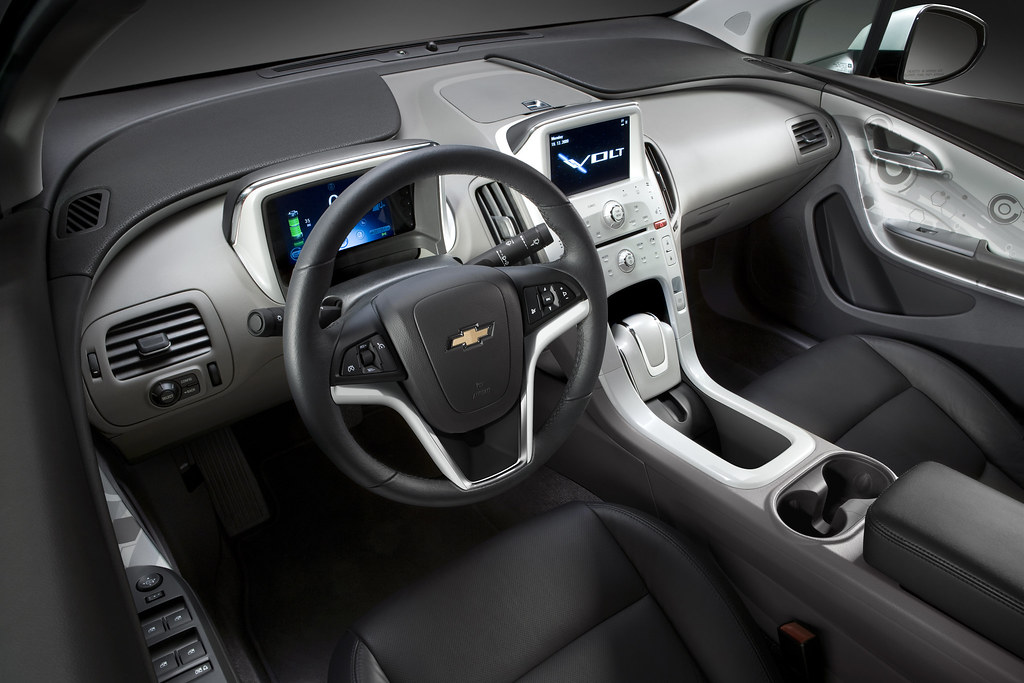
2. **Front Bench Seats**For many family cars through the 1980s, and even persisting into the early 2000s in models like the Chevrolet Impala and Toyota Avalon, front bench seats were the standard. This three-across seating option offered a unique charm, allowing for a cozy intimacy on date nights where a loved one could slide closer to the driver. Some drivers also appreciated the extra room to spread their knees when no third passenger was present, providing a sense of spaciousness.
Despite their nostalgic appeal, the middle seat of a bench was rarely the most comfortable, often being narrow and leading to awkward rubbing of elbows, shoulders, and knees. The primary reason for the widespread disappearance of bench seats, however, is safety. Modern airbags are engineered to function optimally when positioned directly in front of a passenger, a configuration that proved nearly impossible to achieve for a center front seat, typically located where the radio would be.
Modern car designs prioritize individual seating, offering better support, enhanced comfort, and, most importantly, superior safety. Bucket seats have become the contemporary standard, providing dedicated space and protection for each occupant. This shift reflects a move towards more personalized and secure interior layouts, a significant improvement over the less protected, albeit romantic, couch-like experience of an old-school bench seat.
Car Model Information: 1966 Chevrolet Impala SS
Name: Chevrolet Impala
Caption: Fourth generation model (1967)
Manufacturer: Chevrolet
Production: 1957–1985,1994–1996,1999–2020
ModelYears: 1958–1985,1994–1996,2000–2020
Predecessor: Chevrolet Bel Air,Chevrolet Lumina#Second generation (1995–2001)
Successor: Chevrolet SS,Chevrolet Caprice
Platform: GM B platform,GM W platform,GM W platform (GMX211) (2005–2013),GM Epsilon platform#Epsilon II
Class: Full-size car,Mid-size car
Layout: Front-engine, rear-wheel-drive layout,Front-engine, front-wheel-drive layout
Categories: 1960s cars, 1970s cars, 1980s cars, 1990s cars, 2000s cars
Summary: The Chevrolet Impala () is a full-size car that was built by Chevrolet for model years 1958 to 1985, 1994 to 1996, and 2000 to 2020. The Impala was Chevrolet’s popular flagship passenger car and was among the better-selling American-made automobiles in the United States.
For its debut in 1958, the Impala was distinguished from other models by its symmetrical triple taillights. The Chevrolet Caprice was introduced as a top-line Impala Sport Sedan for model year 1965, later becoming a separate series positioned above the Impala in 1966, which, in turn, remained above the Chevrolet Bel Air and the Chevrolet Biscayne. The Impala continued as Chevrolet’s most popular full-sized model through the mid-1980s. Between 1994 and 1996, the Impala was revised as a 5.7-liter V8–powered version of the Chevrolet Caprice Classic sedan.
In 2000, the Impala was reintroduced again as a mainstream front-wheel drive car. In February 2014, the 2014 Impala ranked No. 1 among Affordable Large Cars in U.S. News & World Report’s rankings. When the 10th generation of the Impala was introduced for the 2014 model year, the 9th generation was rebadged as the Impala Limited and sold only to fleet customers through 2016. During that time, both versions were sold in the United States and Canada. The 10th-generation Impala was also sold in the Middle East and South Korea.
Get more information about: Chevrolet Impala
Buying a high-performing used car >>>
Brand: Chevrolet Model: Impala
Price: $56,991 Mileage: 51,426 mi.
Read more about: Beyond the Headlines: 12 Supporting Performances That Blew Us Away and Deserved Every Single Award!
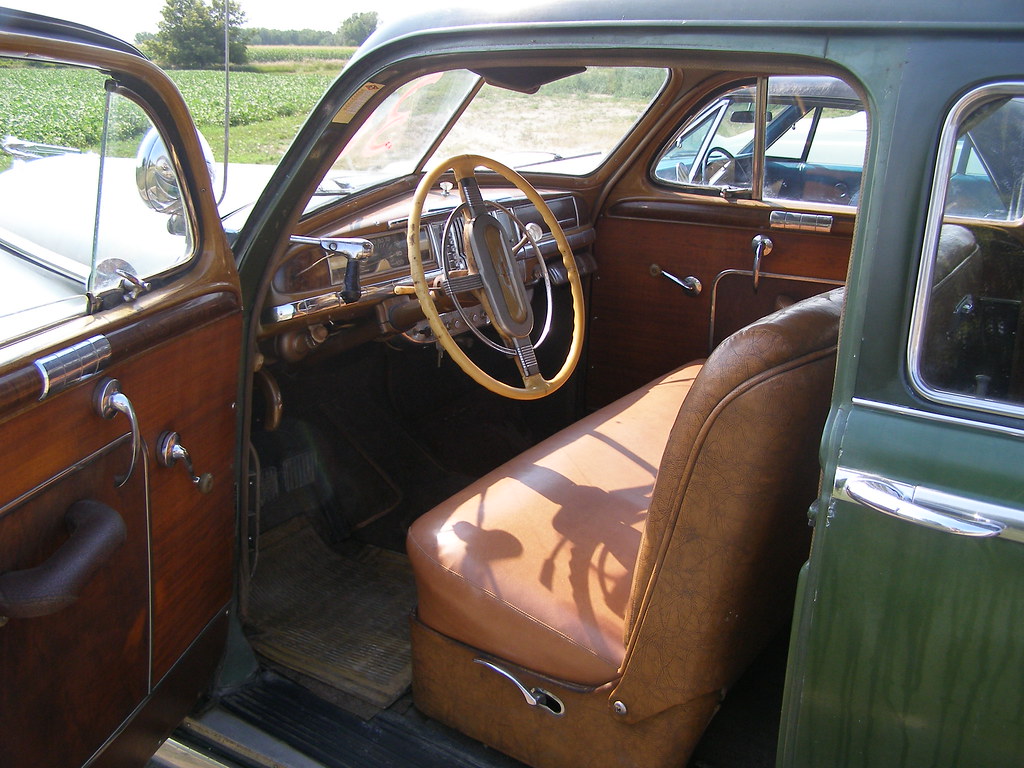
3. **Wind-Up Windows (Manual Window Cranks)**There was a time when advertisements for used cars would proudly highlight features like power windows, power door locks, and air conditioning, as these were considered expensive options. Manual, wind-up windows were the default, and the act of rolling a window up or down by hand was a common, if sometimes arduous, part of driving. It was a workout for the wrist, especially in the backseat, but it was a reliable mechanism that worked every time, free from power failures or complicated electronics.
However, the disappearance of manual windows is a change few drivers lament. Who can forget the struggle of having to reach across the entire car to furiously raise windows during a sudden downpour, or the sore wrists and broken handles that were common occurrences? Modern manufacturing efficiencies have played a significant role in their obsolescence; it’s now far simpler and more cost-effective for car factories to stock and install a single type of window winder, specifically power windows, rather than two.
Today, with the simple press of a button, all windows can be opened or closed effortlessly, offering unparalleled convenience. The ease of training factory workers to install one type of part, combined with the overwhelming popularity of power windows, made the decision to prioritize the more modern choice an inevitable one. The manual crank, once a symbol of basic functionality, is now only found in vintage models or certain entry-level vehicles in some regions, a testament to how far user convenience has evolved.

4. **Ashtrays and Cigarette Lighters**Not so long ago, smoking in nearly any public or private space, including inside vehicles, was widely accepted as a way of life. Consequently, almost every car was factory-equipped with built-in ashtrays and cigarette lighters to accommodate drivers and passengers who smoked. The cigarette lighter, a push-button device, provided an auxiliary power outlet, while the ashtray, often integrated seamlessly into the dashboard or door panels, offered a convenient receptacle for ashes.
As public awareness of the health effects of smoking grew, and societal norms shifted, the presence of these features began to decline. Fewer cars were equipped with dedicated ashtrays as standard, and the traditional push-button cigarette lighter gradually transformed. While the 12-volt power outlet remained, its primary function evolved from lighting cigarettes to powering a myriad of electronic devices such as phone chargers, cooling fans, portable fridges, and power inverters.
Modern vehicles now prioritize cleaner, healthier driving environments, replacing these once-standard features with USB ports and versatile storage trays. While smokers can still often be accommodated with an optional “smokers’ package” that includes a lighter and a cup-holder-fitting ashtray, these are add-ons rather than integral components. The transformation of the cigarette lighter outlet into a general power source perfectly encapsulates the shift from a specific-use accessory to a multi-functional utility, aligning with contemporary needs.
Read more about: Beyond the Hype: Unearthing the Strange Origins and Epic Fails of 12 Iconic Innovations

5. **Spare Tires**When was the last time you experienced a flat tire? For many drivers, it’s an increasingly rare occurrence, thanks to advancements in tire technology. This reduction in commonality, coupled with the automotive industry’s relentless pursuit of improved fuel economy, has led to a significant change in how cars handle tire emergencies. A spare tire, particularly a full-sized one, adds considerable weight to a vehicle, and weight is unequivocally the enemy of efficiency.
This quest for lighter, more fuel-efficient vehicles has prompted many manufacturers to replace the traditional spare tire with alternative solutions. Today, it’s far more common for cars to come equipped with run-flat tires, which can be driven for several miles even without air pressure, or with a simple can of tire sealant and a small air compressor. These alternatives offer a lighter-weight solution, contributing to better fuel economy and providing a temporary fix for minor punctures.
While these modern solutions offer convenience, it still pays to retain the life skill of knowing how to change a tire, even if your car doesn’t carry a spare. The transition away from full-sized spares signifies a broader shift in automotive design philosophies, balancing practical emergency preparedness with the critical demands of fuel efficiency and overall vehicle performance. The peace of mind a fifth, identical tire once offered has largely been traded for lighter, more integrated, and efficient emergency repair kits.
Read more about: Level Up Your Love Life: 14 Relationship Deal-Breakers You Absolutely Can’t Ignore, According to Experts
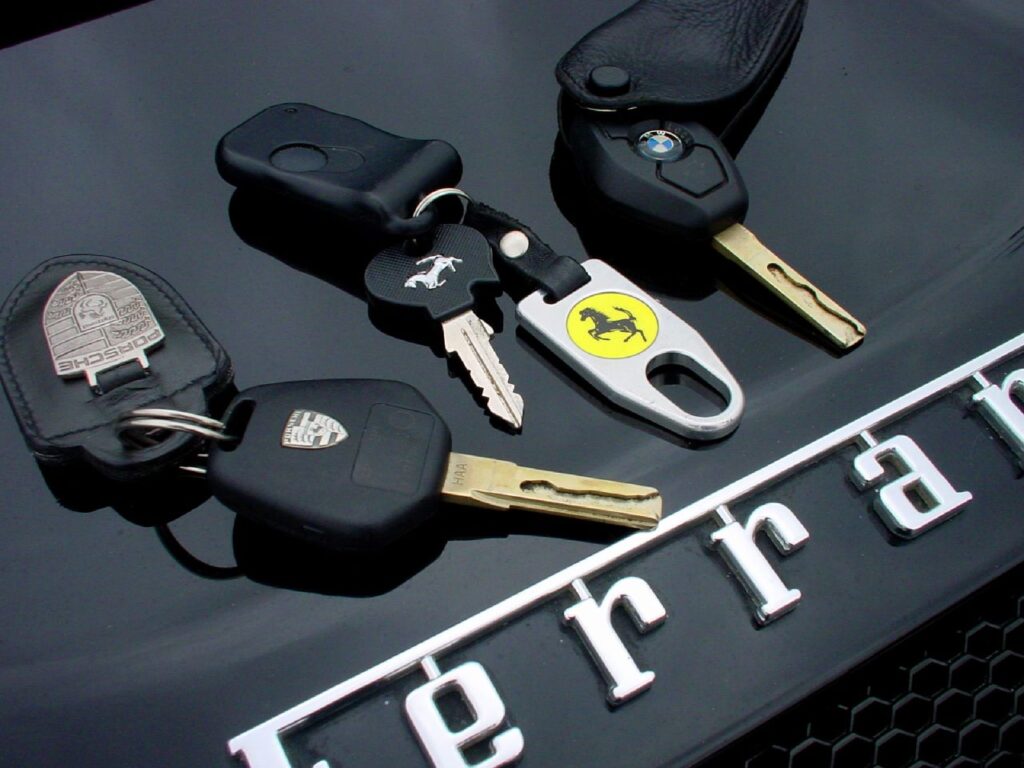
6. **Traditional Keys**Traditional keys, requiring physical insertion into a lock cylinder to unlock doors and an ignition slot to start the engine, haven’t vanished entirely. Entry-level cars and those destined for rental fleets often retain them due to their perceived durability and a reduced risk of loss by careless renters. However, for most new car buyers, the traditional key is rapidly becoming a thing of the past, making way for more sophisticated access technologies.
The widespread adoption of proximity keys, also known as keyless entry and start systems, has redefined convenience. These advanced keys allow drivers to unlock, start, and drive their cars without ever physically removing the key from their pocket or bag. Utilizing radio signals, they digitally communicate with the vehicle, offering a seamless and effortless user experience. This technology truly embodies the modern driver’s desire for convenience and integration.
Despite their undeniable advantages, proximity keys do present certain drawbacks, notably a vulnerability to relay theft, where sophisticated thieves can amplify the key’s signal from inside a house to unlock and start the car. Nevertheless, the convenience they offer, allowing for a completely hands-free interaction with the vehicle, has firmly established them as the preferred option. The days of fumbling with multiple keys for different locks—one for the doors, one for the gas pump, and one to start the car—are largely over.
Read more about: Unmasking the True Price: 14 Hidden Costs That Turn Car Ownership into a Financial Maze for Every Driver
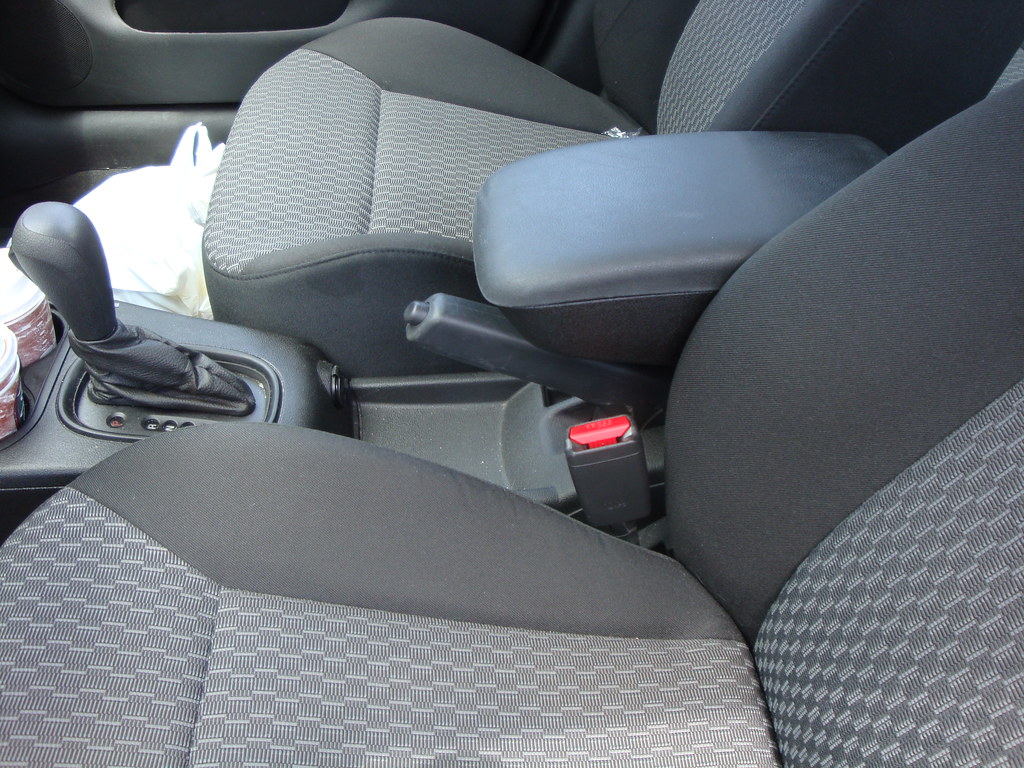
7. **Parking Brake Handles (Traditional Lever)**Often informally referred to as emergency brakes because they typically remain functional even if the regular floor brakes fail, the traditional pull-up lever parking brake has been a fixture in cars for decades. This mechanical lever, usually located between the front seats, required manual engagement, providing a direct, tactile sense of security when parking, especially on inclines. It was a simple, robust, and universally understood mechanism.
However, this familiar lever is steadily disappearing from the interiors of most new cars, supplanted by electronic parking brakes that activate with a mere push of a button. For automotive engineers, the electronic button offers significantly greater flexibility in terms of packaging, allowing for more efficient use of interior space. This newfound spatial freedom often translates into more room for highly coveted features like additional cupholders, charging pads, or other storage solutions for electronic devices.
One particularly appealing benefit of electronic parking brakes is their programmability. Many systems can be set to engage automatically when the vehicle is parked, which is especially advantageous when parking on hills. This automatic engagement helps to preserve the longevity of the transmission by ensuring that the car’s weight is not borne solely by the transmission gears, thereby reducing wear and tear. The move to electronic controls represents a clear step forward in convenience, interior design optimization, and subtle mechanical protection, making the old lever feel decidedly cumbersome.

8. **Rear-hinged doors**For luxury vehicles through the 1960s, rear-hinged doors were a distinctive feature, especially for those seated in the back. Their design allowed passengers to make a more graceful and spacious entrance and exit from the vehicle. This elegant solution was particularly favored for chauffeur-driven cars, where the aesthetic of arrival and departure was paramount, offering a touch of sophisticated flair that was highly valued in its era.
Despite their stylish appeal, these doors quickly acquired the ominous moniker of “suicide doors” due to significant safety concerns. In the event of an accident, these doors were prone to opening rather easily, posing a substantial risk to occupants. Furthermore, if opened inadvertently into traffic, they presented a clear danger to passing pedestrians or bicyclists, highlighting a critical design flaw that modern safety standards would deem unacceptable.
While largely phased out, the concept occasionally resurfaces with considerable safety enhancements. For example, the 2019 Lincoln Continental with “Coach Doors” offered a refined take on the traditional rear-hinged design, incorporating much safer latching mechanisms to mitigate previous risks. However, the fundamental issues of pedestrian and occupant safety, coupled with the complexities of modern vehicle structures, mean that the original, less secure iteration of these doors remains a relic of a bygone automotive era, rarely sought after today.
Read more about: Revving Through History: The 14 Unforgettable Machines That Defined the Roaring Sixties Automotive Era
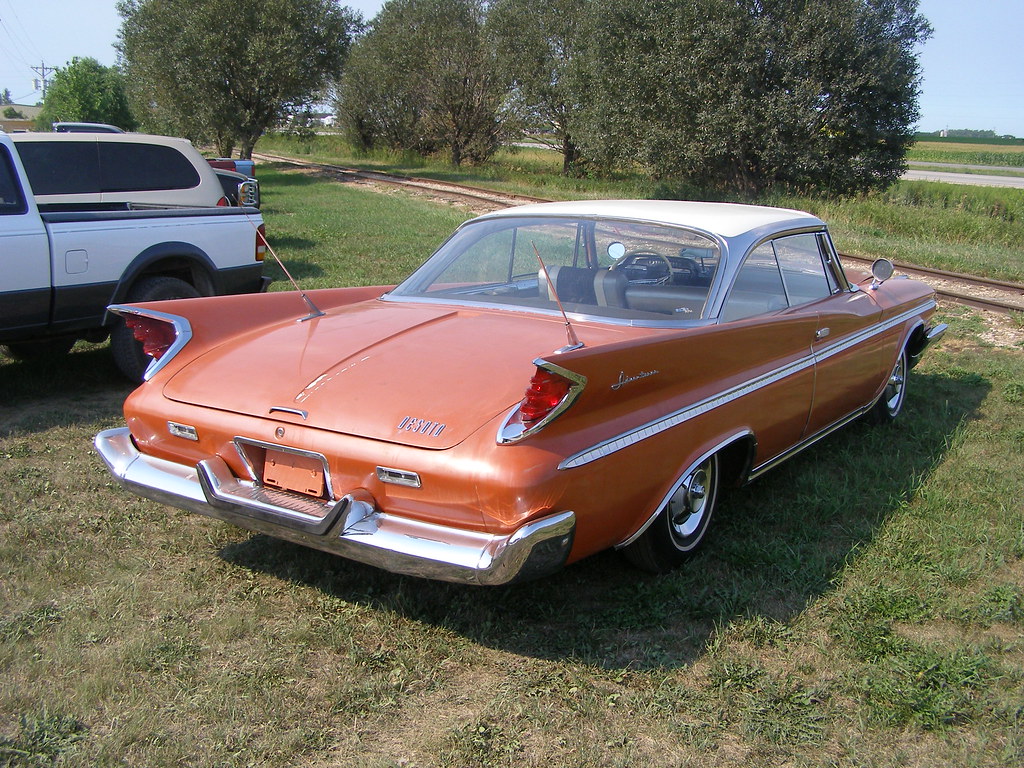
9. **Power Antennas**Once a quintessential element of many cars, power antennas offered a touch of mechanical theater. With a turn of the key, these slender rods would elegantly rise from their hidden recesses, ready to capture radio signals with an almost sci-fi flourish. This automatic extension and retraction added to the car’s aesthetic, providing a sense of technological advancement and convenience, especially when pulling in distant radio stations was a priority.
However, this seemingly sophisticated feature proved to be one of the least reliable components on a car. Power antennas were notoriously prone to mechanical failure, often breaking due to the repetitive movement or external forces. This issue was particularly exacerbated in colder climates, where snow and ice frequently caused them to freeze shut, rendering them inoperable and frustrating for drivers who relied on radio reception.
With the advent of modern digital broadcasting and the widespread adoption of satellite radio, the need for a tall, retractable antenna diminished considerably. Today, these fragile, often problematic devices have been replaced by more robust and discreet solutions. Vehicles are now typically equipped with small plastic “shark-fin” antennas seamlessly integrated onto the roof, or even a wire embedded directly into the windshield glass, improving both radio reception and the vehicle’s overall aerodynamics without the reliability headaches of their predecessors.
Read more about: Beyond the Headlines: 12 Supporting Performances That Blew Us Away and Deserved Every Single Award!
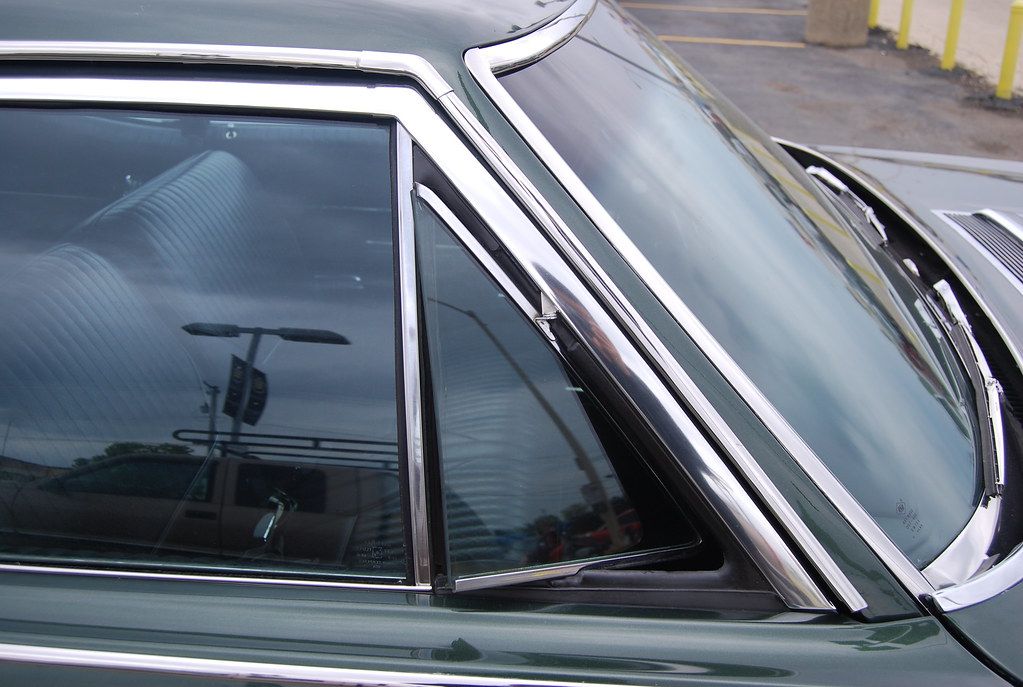
10. **Vent Windows**Before the ubiquitous presence of air conditioning, vent windows were a celebrated feature, offering a clever solution for in-car ventilation on hot days. Positioned near the side mirror on the front doors, these small, triangular panes of glass could be rotated open or closed, allowing drivers and passengers to direct a focused stream of fresh air directly onto their faces. This provided a much-needed gentle breeze, making driving significantly more comfortable even with the main windows closed.
Beyond just providing a refreshing airflow, these rotating windows also served practical purposes. They were particularly appreciated by smokers, offering a convenient way to vent smoke without fully opening the main window. Furthermore, some drivers found them useful for quickly airing out a car, or, in less fortunate circumstances, as a potential point of entry should keys accidentally be locked inside the vehicle, offering a peculiar form of access that modern cars have rendered unnecessary.
However, as automotive design evolved and air conditioning became a standard feature across most models, the need for vent windows diminished. They were ultimately sacrificed in favor of sleeker, more sealed car designs, which prioritized aerodynamics and interior climate control through advanced HVAC systems. While some might recall their charm, their propensity for leaks and wind noise, coupled with the superior functionality of modern climate systems, ensures that these once-common mini-flaps are now largely obsolete.
Read more about: Unmasking the True Price: 14 Hidden Costs That Turn Car Ownership into a Financial Maze for Every Driver

11. **Pop-Up Headlamps**For many years, pop-up headlamps were a hallmark of automotive styling, imparting a sleek, futuristic aesthetic to vehicles from the 1970s through the 1990s. These lights, hidden beneath body panels during the day, would dramatically pop up when needed at night, giving cars a distinctive “secret agent” look. This design choice was partly influenced by car stylists and engineers who sought to create lower front ends for improved aerodynamics and cooler visual appeal, working within strict government mandates on headlamp sizes and shapes.
During their heyday, the U.S. government mandated specific sizes and shapes for car headlamps. To achieve the desired low-slung, aerodynamic profiles, designers found that hiding the bulky headlamps when not in use was an ingenious workaround. This allowed for cleaner, uninterrupted lines on the front fascia, contributing to what was then considered cutting-edge design and a sense of exclusivity for models like the Mazda RX-7 or Corvette C4.
However, the glamour of pop-up headlamps came with significant practical shortcomings. They were notoriously prone to mechanical failure, with the motors often breaking or the lids sticking, leading to costly and frequent repairs. More critically, safety concerns ultimately sealed their fate. These protruding lamps, when deployed, could be very dangerous to pedestrians and bicyclists in the event of a collision, prompting a re-evaluation of their design.
The decline of pop-up headlamps accelerated in the 1990s as government regulations on headlight design were relaxed, allowing for smaller, more integrated bulb technologies. This, combined with growing emphasis on pedestrian safety, rendered the pop-up mechanism both unnecessary and a liability. Today, modern cars feature highly efficient, flush-mounted lighting systems that prioritize safety and reliability, making the old “robot eyes” a nostalgic, but impractical, memory.
Read more about: Pure Automotive Gold: 14 Masterpiece Cars from the 1960s That Still Reign Supreme
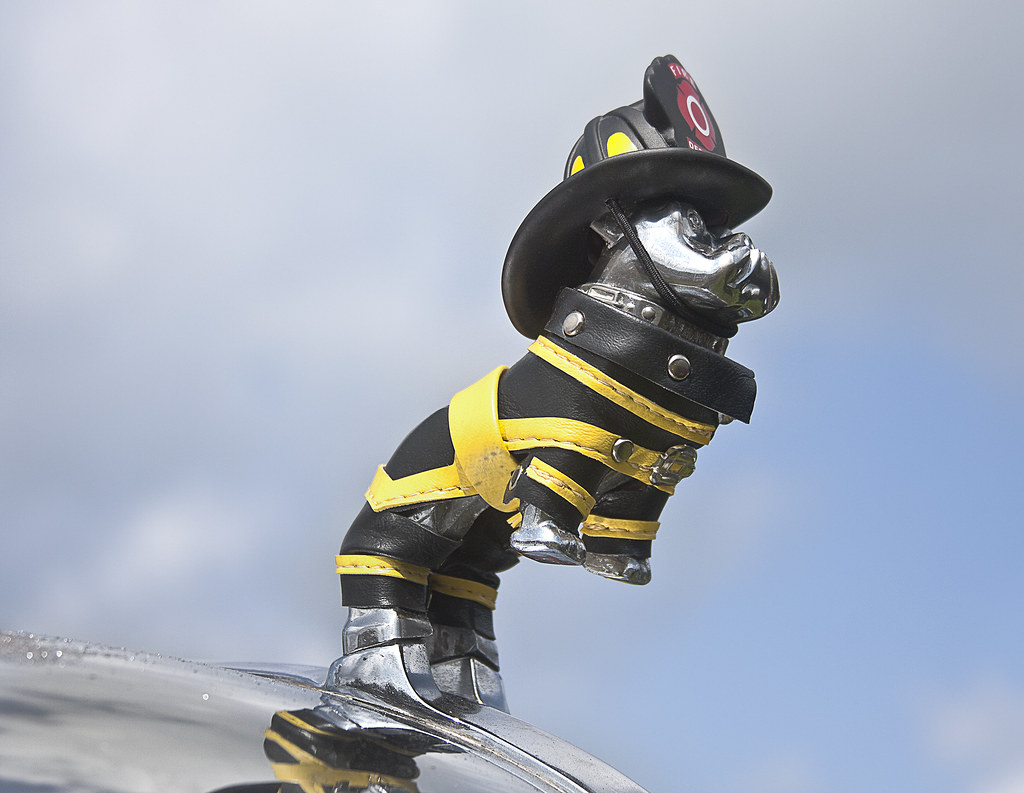
12. **Hood Ornaments**Once a proud emblem of automotive luxury and brand identity, hood ornaments adorned the front of many vehicles, from the leaping Jaguar to the Spirit of Ecstasy on a Rolls-Royce. These chrome mascots were designed to make a grand statement, proclaiming the car’s prestige and pedigree before the engine even turned over. They were an iconic part of a car’s aesthetic, contributing significantly to its character and visual appeal, often mounted on the radiator cap on cars built before World War II.
Historically, prior to the widespread use of enclosed radiators, the hood ornament often served a somewhat functional purpose by being mounted directly onto the exposed radiator cap. This integration was a practical necessity that evolved into a canvas for artistic expression, transforming a utilitarian component into a symbol of pride and craftsmanship. Drivers cherished these intricate details, seeing them as miniature sculptures that crowned their prized possessions.
However, the era of the prominent hood ornament began to wane due to a combination of factors. Safety regulations played a significant role, as these protruding symbols were identified as potential hazards that could cause additional injury to pedestrians or cyclists in the event of a collision. Furthermore, they became frequent targets for thieves, leading to an increased risk of damage and theft, alongside changing aesthetic tastes that favored more minimalist and streamlined designs.
Modern automotive design has largely moved away from stand-up hood ornaments, opting for flush-mounted badges or minimalist logos that are integrated into the grille or hood itself. Some very expensive luxury cars still feature them, but these typically incorporate automatic retracting mechanisms that pull the ornament back under the hood at the first sense of impact, blending tradition with contemporary safety standards. This evolution reflects a shift from overt declarations of luxury to more understated, yet still impactful, brand identification.
Read more about: Detroit’s Golden Age: 12 Classic American Cars That Ruled the Roads and Made a Nation Proud
13. **Automatic Seat Belts**In the pursuit of enhanced safety, particularly during the 1980s and early 1990s, automatic seat belts were introduced as an innovative solution. These passive restraint systems were once hailed as a significant safety breakthrough, designed to slide into place around the occupant automatically once the car door was closed. The intention was to ensure that drivers and front passengers were always belted, even if they forgot or chose not to manually engage a traditional seatbelt.
While the concept aimed to increase compliance with seat belt usage, the practical application often fell short. These belts frequently proved to be more annoying than helpful, often sliding into positions that were uncomfortable or even caused minor discomfort, such as choking passengers. Their mechanical complexity also led to reliability issues, with systems occasionally malfunctioning entirely, leaving occupants unbelted or entangled.
Ultimately, the limitations and frustrations associated with automatic seat belts, coupled with continuous advancements in other safety technologies, led to their eventual obsolescence. The refinement of modern airbags and the widespread adoption of more user-friendly, traditional three-point seat belts, often with pretensioners and load limiters, rendered the automatic systems redundant. Today, the focus remains on active, manually engaged seat belts, complemented by sophisticated airbag systems, offering superior and less intrusive protection.
Read more about: Consumer Alert: The 14 Car Models Most Frequently Regretted by Owners, and Why They Fall Short
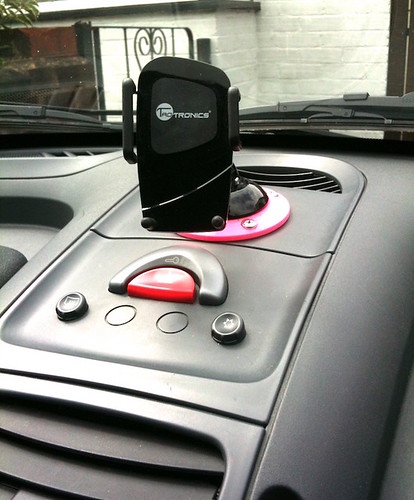
14. **Car Phones**Before the ubiquitous presence of smartphones, car phones represented the pinnacle of in-car connectivity and were a definitive status symbol during the 1980s and early 1990s. These bulky devices, often wired directly into the dashboard with a coiled cord, offered the ability to make calls from the vehicle, signaling an air of importance or sophistication. For many, having a car phone meant being at the forefront of technology, a vision of the future even if the reality was somewhat less glamorous.
Despite their perceived prestige, car phones came with numerous practical shortcomings. They were expensive to install and operate, often produced static-filled conversations, and were barely mobile, requiring users to be within the vehicle to utilize them. Their functionality was limited, and they frequently struggled with reception outside major metropolitan areas, making them more of a hassle than a truly reliable communication tool. They often required their own external antenna or even a dedicated bag in the trunk for the transceiver.
The rapid evolution of mobile technology, particularly the advent of compact, truly portable cell phones and later, smartphones, quickly rendered car phones obsolete. Today, Bluetooth connectivity and advanced hands-free systems seamlessly integrate personal mobile devices with a vehicle’s infotainment system, allowing for effortless communication and navigation. The idea of a dedicated, wired phone in a car now seems like a relic, a testament to how far personal and automotive communication technology has advanced, effectively making car phones an unnecessary and unwanted feature in contemporary vehicles.
Read more about: The Unwritten Rules of the Wedding Guest: 15 Mistakes You’re Making Without Knowing It
The automotive industry’s relentless drive for innovation continually reshapes our driving experience, demonstrating a fascinating cycle where what was once a coveted feature becomes a quaint, or even problematic, artifact of the past. As we look back at these 14 features, from the comforting physicality of cassette tapes to the dramatic flourish of pop-up headlamps, it’s clear that their disappearance wasn’t a loss, but rather a necessary step in the evolution towards safer, more efficient, and ultimately, more convenient vehicles. This ongoing transformation ensures that while we might appreciate the charm of the old, the present and future of car design are undeniably focused on practical advancements that genuinely enhance our journeys. The road ahead, free from clunky mechanisms and outdated technologies, promises an even more integrated and intuitive driving experience, truly designed around the needs of the modern driver.

